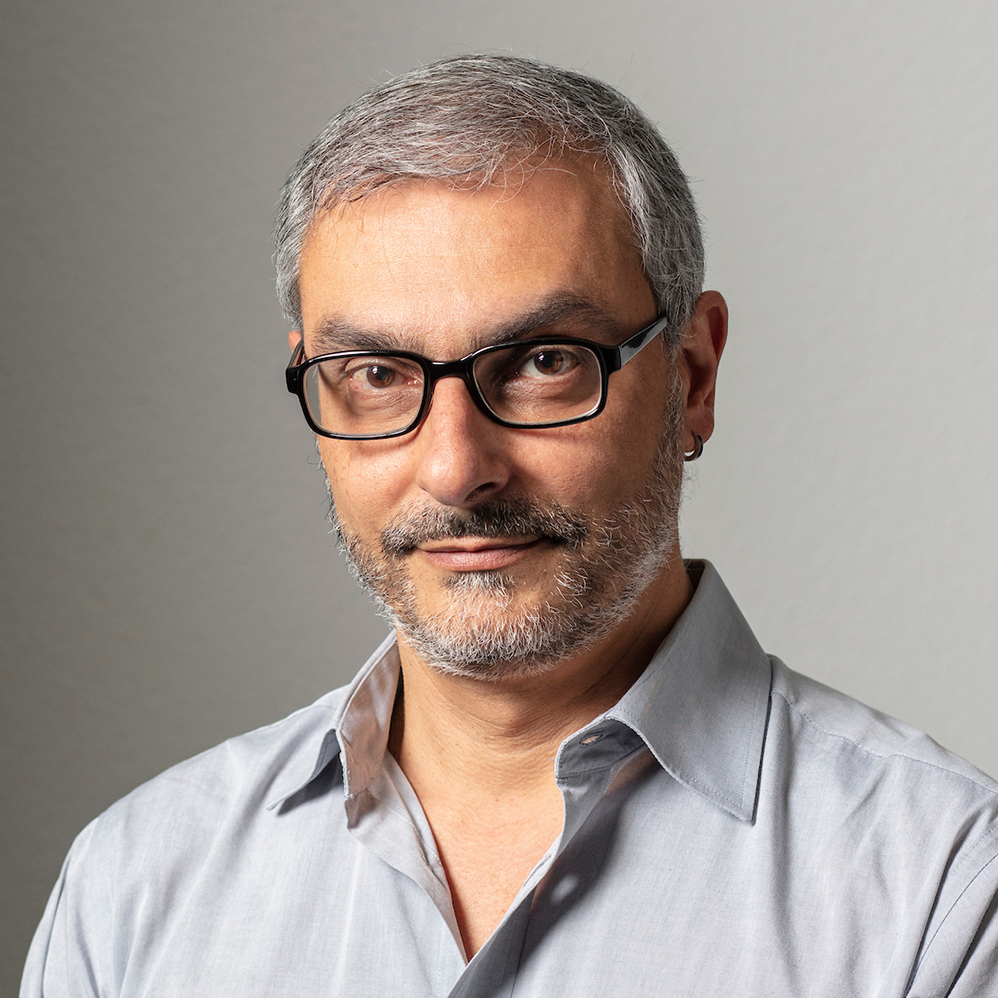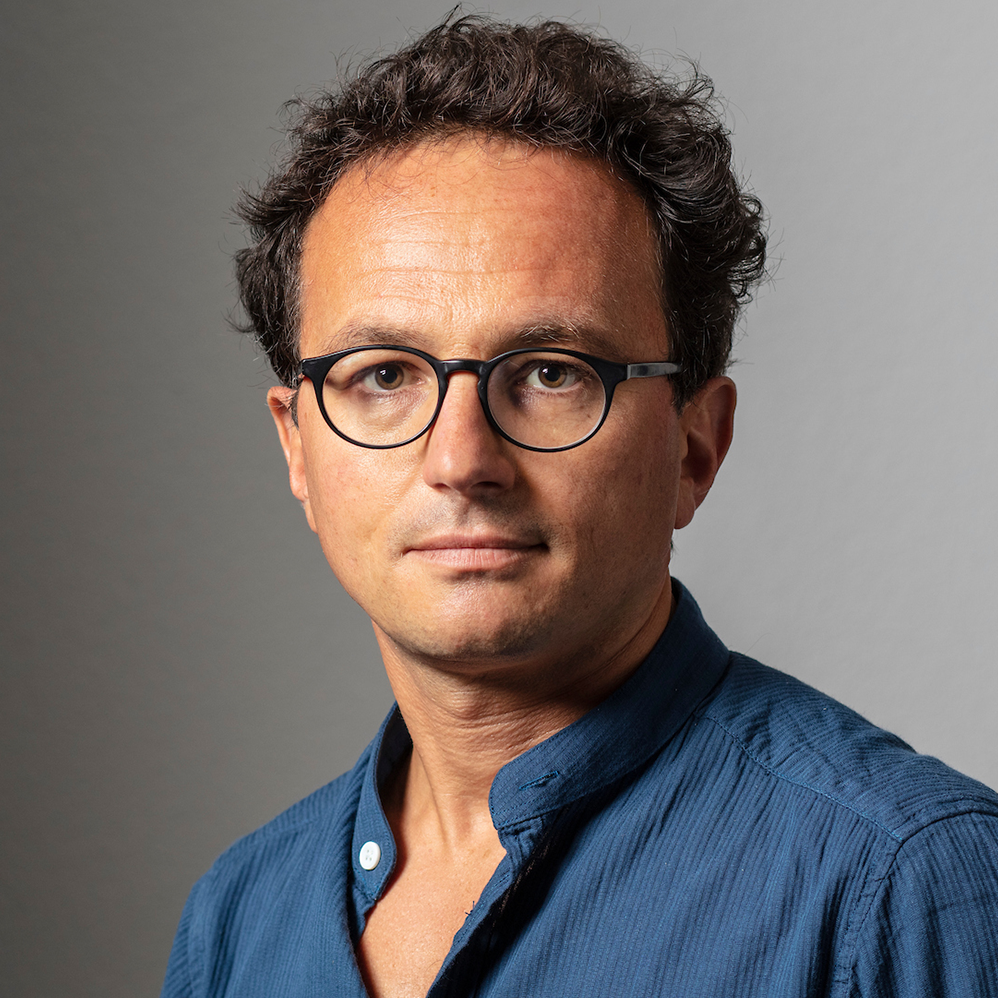
An Alpine carnival: Switzerland stars as a superfiction at the Venice Biennale
The Swiss-Brazilian artist Guerreiro do Divino Amor represents Switzerland for the 60th edition of the Venice Art Biennale, which opens on Saturday. Ahead of the inauguration, SWI swissinfo.ch had exclusive access to the installation, guided by the artist himself.
Venice Biennale is still reminiscent of the world exhibitions of the 19th century. Its format allows countries to project the image they have of themselves. Today, 30 national pavilions showcase their artists’ works in the Giardini (Venice Gardens). They run in parallel to the major exhibition displayed in the Arsenale, a Venice landmark and former complex of shipyards and armories that made the Venetian Republic a naval power for centuries.
This is the second time in a row that Switzerland has chosen artists with migration backgrounds: The Swiss-Moroccan Latifa Echakhch represented the country in 2022. This year, Antoine Guerreiro Golay, aka Guerreiro do Divino Amor, or Warrior of the Divine Love will be the face of Switzerland.
Born in Geneva, Guerreiro has been living in Rio de Janeiro for over ten years. “That’s where I felt more at ease to create, and also more accepted”, he told SWI during a long interview conceded in Venice.
SWI had exclusive access to the Swiss Pavilion a couple of weeks before the opening of the Biennale.

Foreigners everywhere
This edition of the Biennale, curated by the Brazilian Adriano Pedrosa – the first artistic director from the global South – and set under the title “Foreigners Everywhere”, is marked by several shows highlighting the issues of decolonisation, migration, and war.
The Biennale started to ruffle some feathers even before the opening. Ruth Patir, the artist representing Israel, refused to open the Israeli pavilion until a cease-fire was reached in Gaza. On Friday, a massive pro-Palestinian protest took place in front of the Israeli pavilion.
Amid these tensions, Guerreiro’s work brings an original perspective without being at odds with the general trends of the Biennale. He will be presenting the 7th and the 8th chapters of the work he has been developing since his days as an architecture student, “The Superfictional Atlas of the World”: This time he has focused on Switzerland itself with “The Miracle of Helvetia”, and on Rome, with “Rome Talisman”.
Both can be described as transmedia installations, i.e., different narratives on different media composing one “story world” each, where similar themes and concepts interact creating his “superfictions”.
The term “superfiction” was coined by the Scottish artist Peter Hill in 1989 as a visual or conceptual artwork that uses fiction and appropriation to blur the lines between facts and reality about organisations, business structures, and/or the lives of invented individuals. This definition applies quite accurately to Guerreiro’s work.
The artist appropriates images from religious, corporate, agribusiness, and government institutions, transforming them into allegories and creating something akin to a carnival parade. In his practice, Guerreiro decontextualizes these images and icons, and reframes them within his narratives in a mix of fantasy and science fiction. “But they are all hyper-realist, at the same time”, he says.
Andrea Bellini, director of the Contemporary Arts Center of Geneva and appointed curator of the Swiss exhibition, situates Guerreiro’s work in the perspective of the Biennale as a whole. Paraphrasing the title of the Biennale, Foreigners Everywhere, he says that “with the Swiss Pavilion we invite our visitors to feel foreign within their own truths.”
Guerreiro do Divino Amor is our guest in the fourth episode of On the Record.

>>Watch our previous “On the record” episodes:

More
Mikhail Shishkin: ‘It pains me to be a Russian writer’

More
Sergei Pugachev: Swiss banks help Putin’s people avoid sanctions

































You can find an overview of ongoing debates with our journalists here . Please join us!
If you want to start a conversation about a topic raised in this article or want to report factual errors, email us at english@swissinfo.ch.